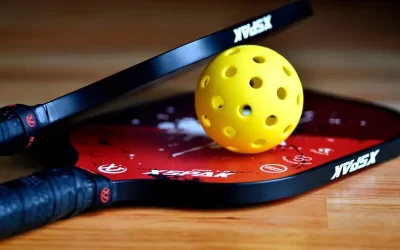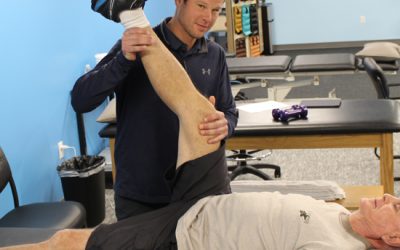by Kristin Keafer DeRousse, PT, DPT
 Ankle sprains are one of the most common musculoskeletal injuries. Often times this injury is brushed aside as “I just rolled my ankle and it’s sore” and unfortunately goes untreated. How many people do you know that have “rolled” or sprained their ankle? How many people do you know that have done this over and over again?
Ankle sprains are one of the most common musculoskeletal injuries. Often times this injury is brushed aside as “I just rolled my ankle and it’s sore” and unfortunately goes untreated. How many people do you know that have “rolled” or sprained their ankle? How many people do you know that have done this over and over again?
Research demonstrates that 25% of lateral ankle sprains results in time lost, potentially 1 week off from school or work. Very often those who sustain a lateral ankle sprain experience residual symptoms, leading to longer term chronic ankle instability. Essentially you are at high risk of rolling your ankle again in the future if it goes untreated. This has shown to significantly alter an individual’s health causing a less active lifestyle in addition to accelerating the arthritic process.4 With the high percentage up to 75% of initial lateral ankle sprains leading to repetitive sprains and chronic symptoms, it is imperative to treat and rehabilitate the FIRST occurrence of these injuries.(3)
What does it actually mean to sprain your ankle?
A sprain is an overstretching or tearing of ligaments. Ligaments are connective tissue that attaches bone to bone to support a joint. There are 3 types of ankle sprains. The most common ankle sprain is called an inversion or lateral ankle sprain.(2)

Inversion (lateral) sprain
Your foot rolls inward which can stretch or tear the ligaments on the outside of the ankle
Eversion (medial) sprain
Your foot rolls outward which can stretch or tear the ligaments on the inside of the ankle
High (syndesmotic) sprain
This is caused by a rotational stress with the foot moving outwards which stretches the ligament above the ankle between the tibia and fibula bones
When should you seek help?
Screening is the first step. Seeking the help of a medical professional as soon as possible to evaluate the need for treatment is very important. This will accelerate the healing process and reduce the risk for recurrent injury in the future. With all of our physical therapists holding a doctorate degree, we are able to directly assess the musculoskeletal injury and determine a need for treatment or referral out to a medical doctor if X-rays are indicated.
What are the signs that you may need treatment?
Difficulty bearing weight on that foot, limping, swelling, difficulty performing daily functional activities such as walking, climbing stairs, and managing uneven ground.
What to expect for treatment?
A full evaluation of your injury will determine a need for referral to a medical doctor or orthopedic specialist. Otherwise many times an ankle sprain can be treated with physical therapy alone.
The first step of treatment is focused on reducing swelling (RICE: Rest, Ice, Compression, Elevation), improving walking mechanics, and possible immobilization. The more you limp on an injured joint the longer the healing process will take. Typically there is a need for hands on treatment by the physical therapist to improve the mobility of your ankle joint, to loosen up tight muscles around the joint, and help reduce the pain.
The next steps of treatment will focus on improving flexibility and strength of your entire leg. Each individual will be assessed for their own impairments and which muscle groups need to be addressed with specific stretching and strengthening exercises. Typically this involves stretching the calf and strengthening the stabilizing muscles on the medial and lateral sides of the joint.

The last steps of treatment focuses on primarily balance training. This is where we are working on improving your proprioception to increase the stability of the joint and prevent re injury in the future. Proprioception is the ability to sense the orientation of your body in your environment. There is a constant feedback loop in her nervous system where the sensory nerve endings in your joint and muscle send a signal to your brain. Joint position and how much stretch or strain is on your muscle is interpreted by your brain and your body will adjust for this subconsciously. For instance, if you are walking on a sidewalk and turn to walk on grass, your body knows how to adjust for this without your vision because of proprioception. However, with an injury to the joint and muscles of your ankle after a sprain, proprioception is impaired and the risk of rolling your ankle again increases up to 75% secondary to a problem with this feedback loop.3 This is probably the most important long term treatment to prevent re injury in the future.
So what have you learned?
Next time don’t wait to have your injury screened. Deficits in range of motion, strength, and proprioception sustained with an ankle sprain are all factors that can lead to long term chronic ankle instability.5 Physical therapy can help to normalize all of these factors, so why not seek out treatment. Let’s help to get you back on your feet faster and prevent problems with ankle instability in the future!
Visit either of our Rye Physical Therapy locations in both Hampton, NH and Seabrook, NH for an assessment of an old or new injury.
- References
- (1) Al-Mohrej O, Al-Kenani N Chronic ankle instability: Current perspectives. Avicenna J Med. 2016 Oct-Dec; 6(4): 103–108. doi: 10.4103/2231-0770.191446
- (2) Doherty C, Delahunt E, Caulfield B, Hertel J, Ryan J, Bleakley C. The incidence and prevalence of ankle sprain injury: a systematic review and meta-analysis of prospective epidemiological studies. Sports Med. 2014 Jan;44(1):123-40. doi: 10.1007/s40279-013-0102-5.
- (3) Hubbard T, Wikstrom E. Open Access J Sports Med. Ankle sprain: pathophysiology, predisposing factors, and management strategies. 2010; 1: 115–122. Published online 2010 Jul 16.
- (4) Shweta Shah, MHA, Abbey C. Thomas, PhD, ATC, Joshua M. Noone, PhD, Christopher M. Blanchette, PhD, MBA, and Erik A. Wikstrom, PhD, ATC, FACSM. Incidence and Cost of Ankle Sprains in United States Emergency Departments. Sports Health. 2016 Nov; 8(6): 547–552. doi: 10.1177/1941738116659639.
- (5) Thompson C, Schabrun S, Romero R, Bialocerkowski A, Marshall P. Factors contributing to chronic ankle instability: a protocol for a systematic review of systematic reviews. Syst Rev. 2016 Jun 7;5:94. doi: 10.1186/s13643-016-0275-8.
- (6) Verhagen RA, de Keizer G, van Dijk CN. Long-term follow-up of inversion trauma of the ankle. Arch Orthop Trauma Surg. 1995;114(2):92-6.




